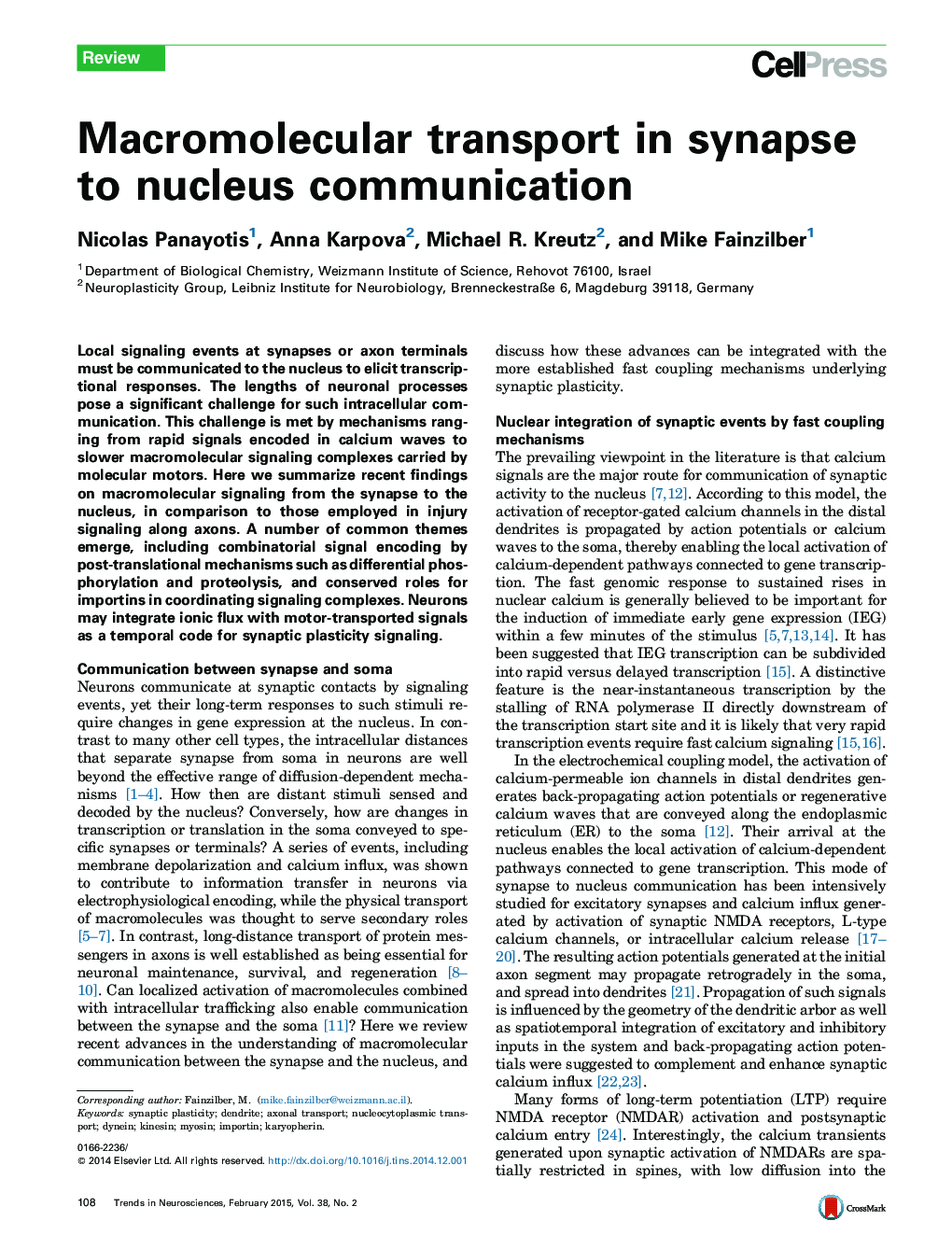| Article ID | Journal | Published Year | Pages | File Type |
|---|---|---|---|---|
| 4354230 | Trends in Neurosciences | 2015 | 9 Pages |
•ERK can signal from the synapse to the nucleus by macromolecule trafficking.•Importins are involved in the transport of synaptic signals.•Similar mechanisms operate in the transport of plasticity signals in dendrites and injury signals in axons.•Neurons may integrate calcium-based and motor-dependent signals from the synapse to the nucleus.
Local signaling events at synapses or axon terminals must be communicated to the nucleus to elicit transcriptional responses. The lengths of neuronal processes pose a significant challenge for such intracellular communication. This challenge is met by mechanisms ranging from rapid signals encoded in calcium waves to slower macromolecular signaling complexes carried by molecular motors. Here we summarize recent findings on macromolecular signaling from the synapse to the nucleus, in comparison to those employed in injury signaling along axons. A number of common themes emerge, including combinatorial signal encoding by post-translational mechanisms such as differential phosphorylation and proteolysis, and conserved roles for importins in coordinating signaling complexes. Neurons may integrate ionic flux with motor-transported signals as a temporal code for synaptic plasticity signaling.
